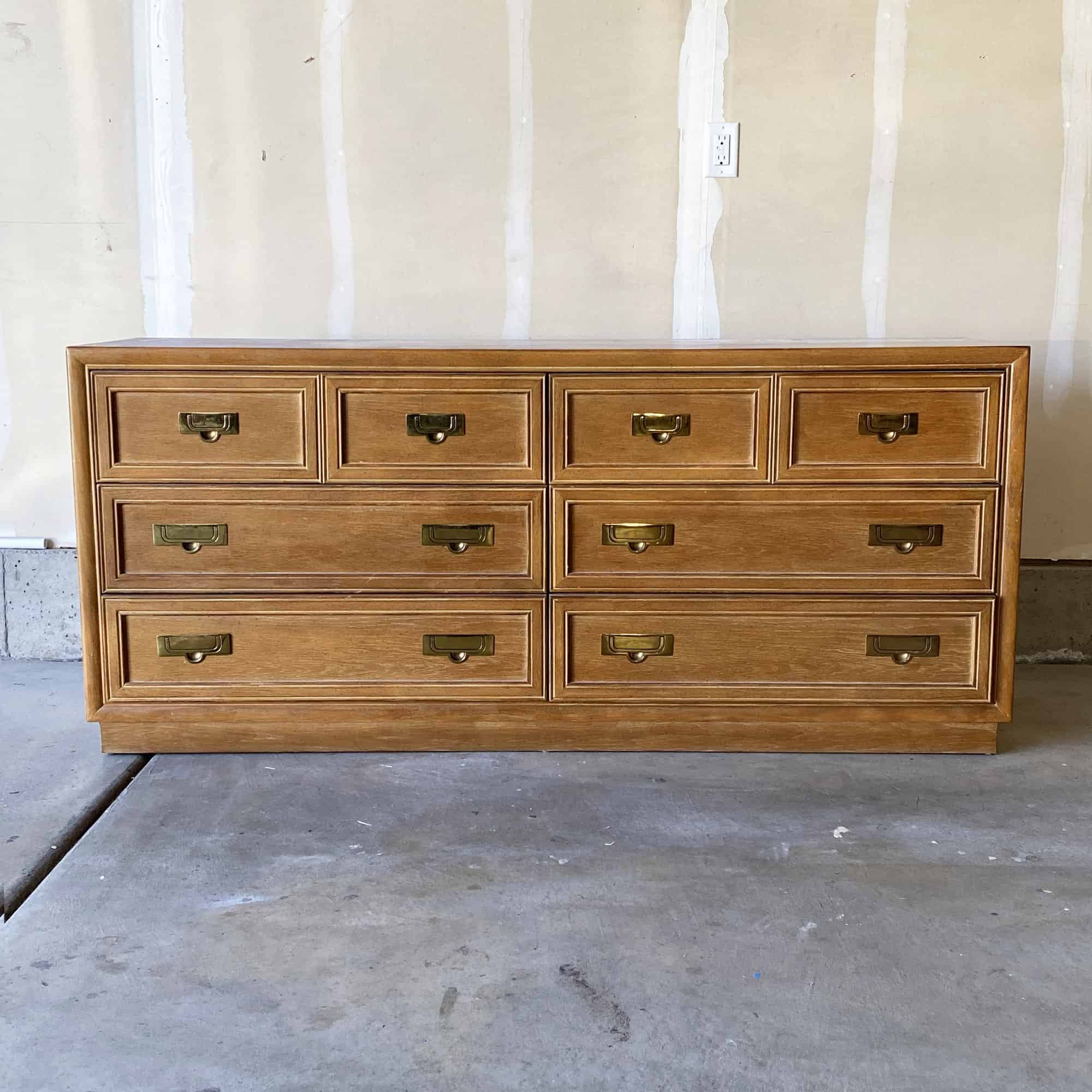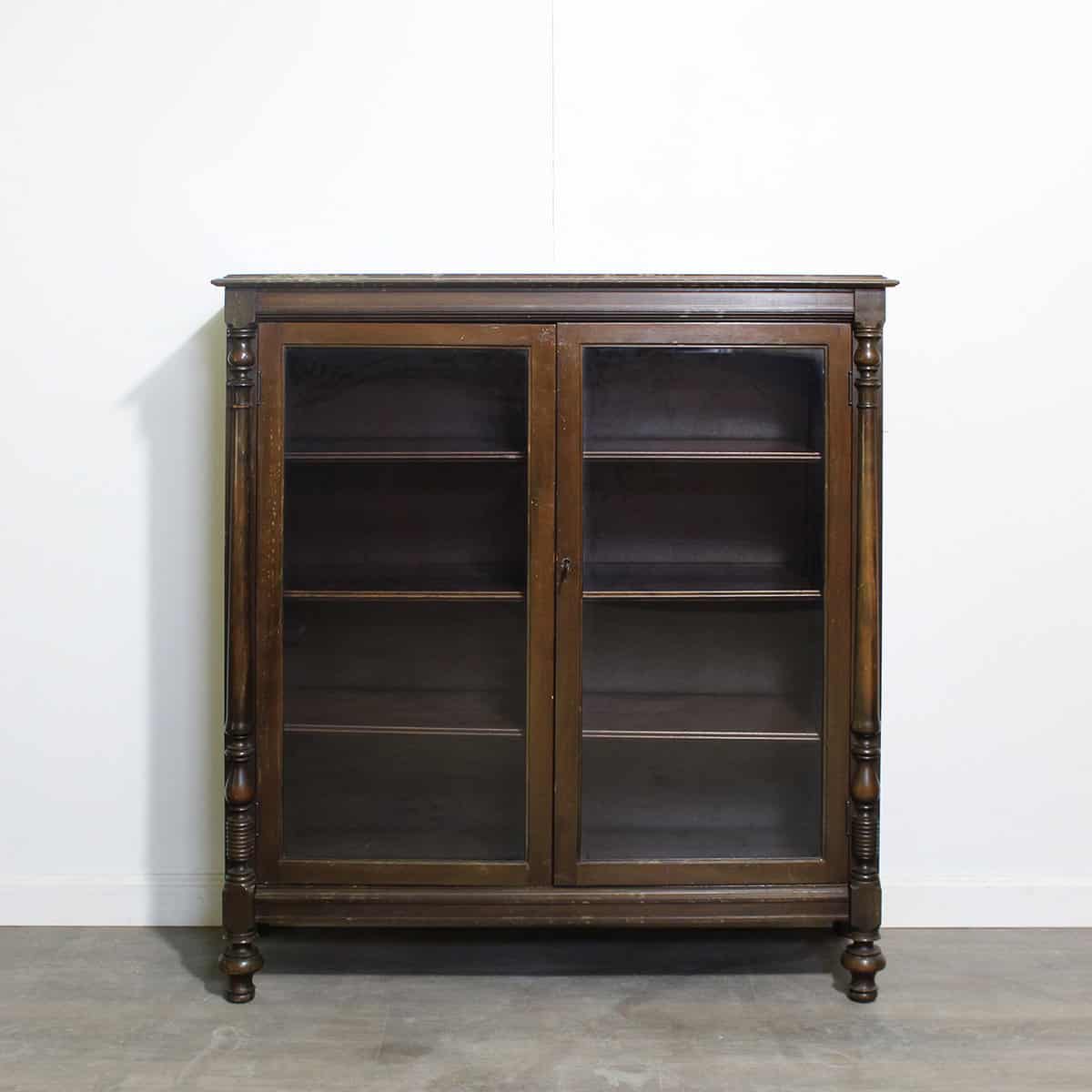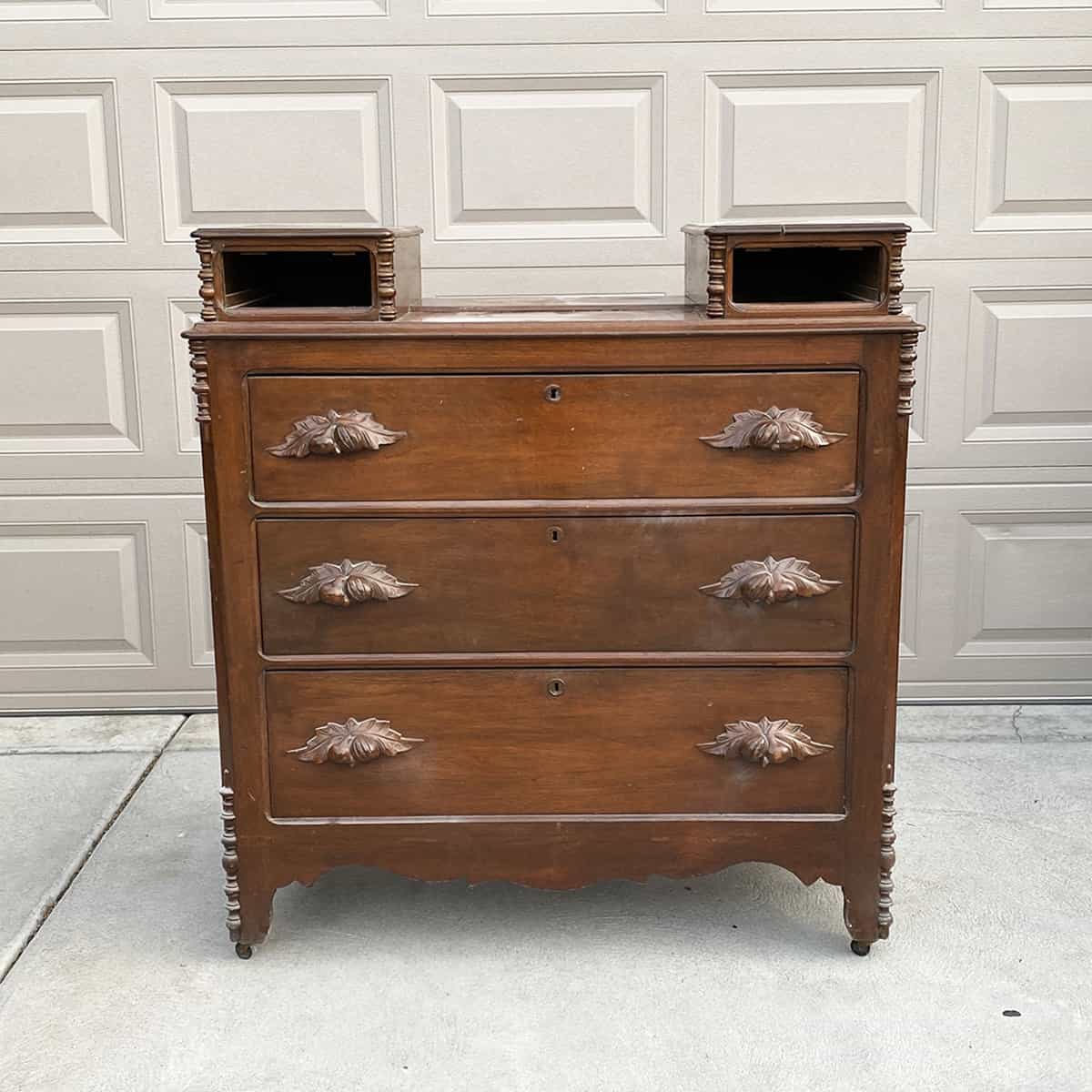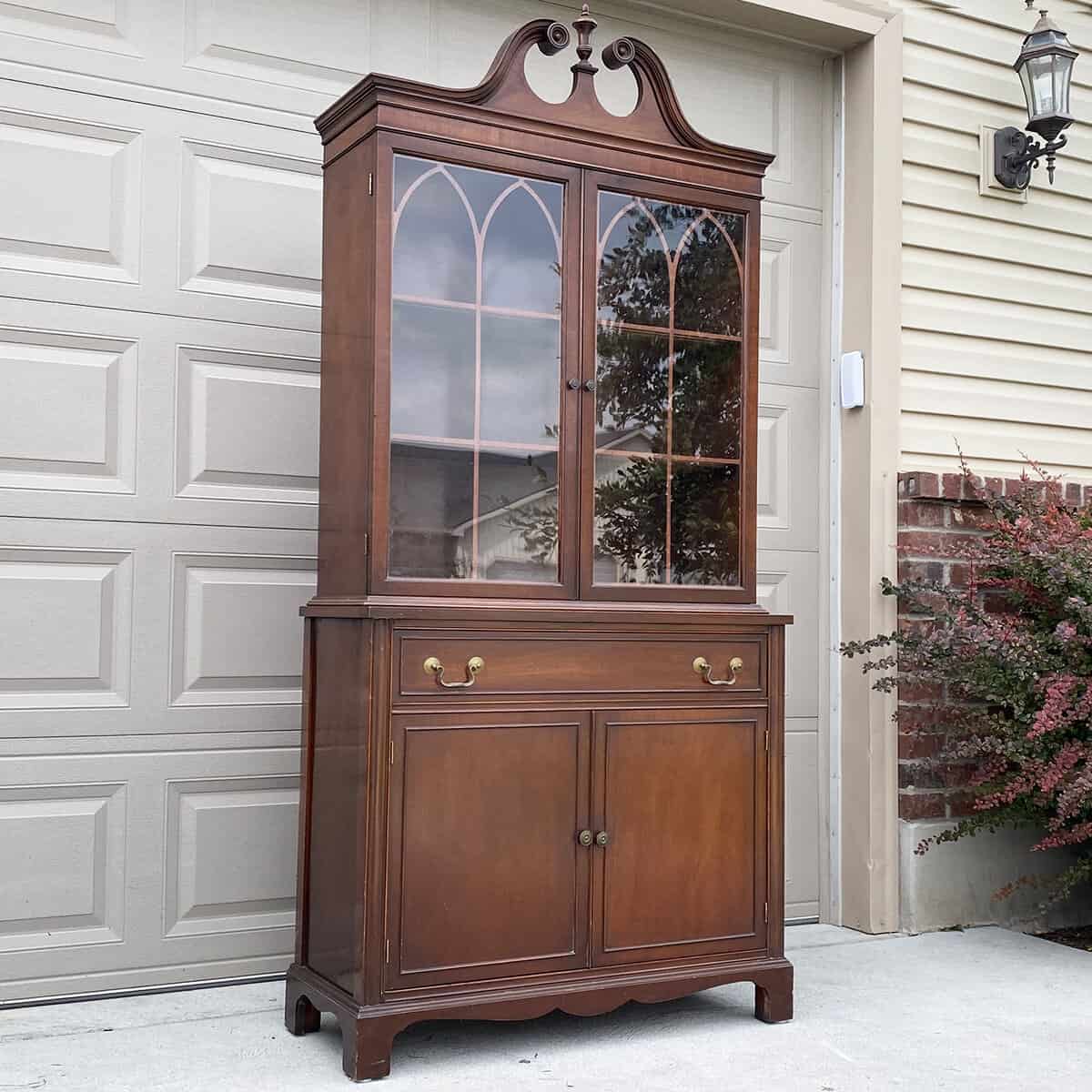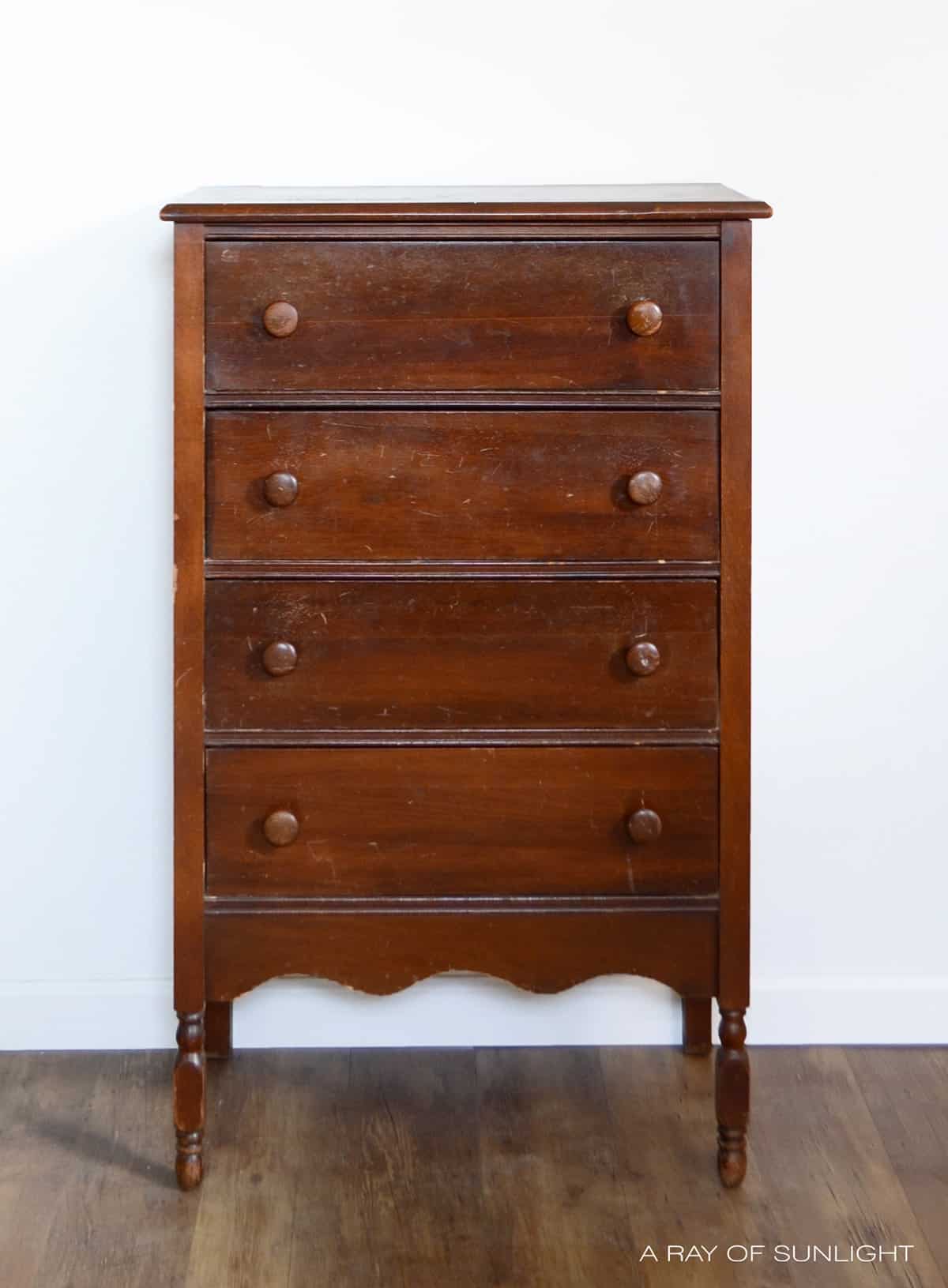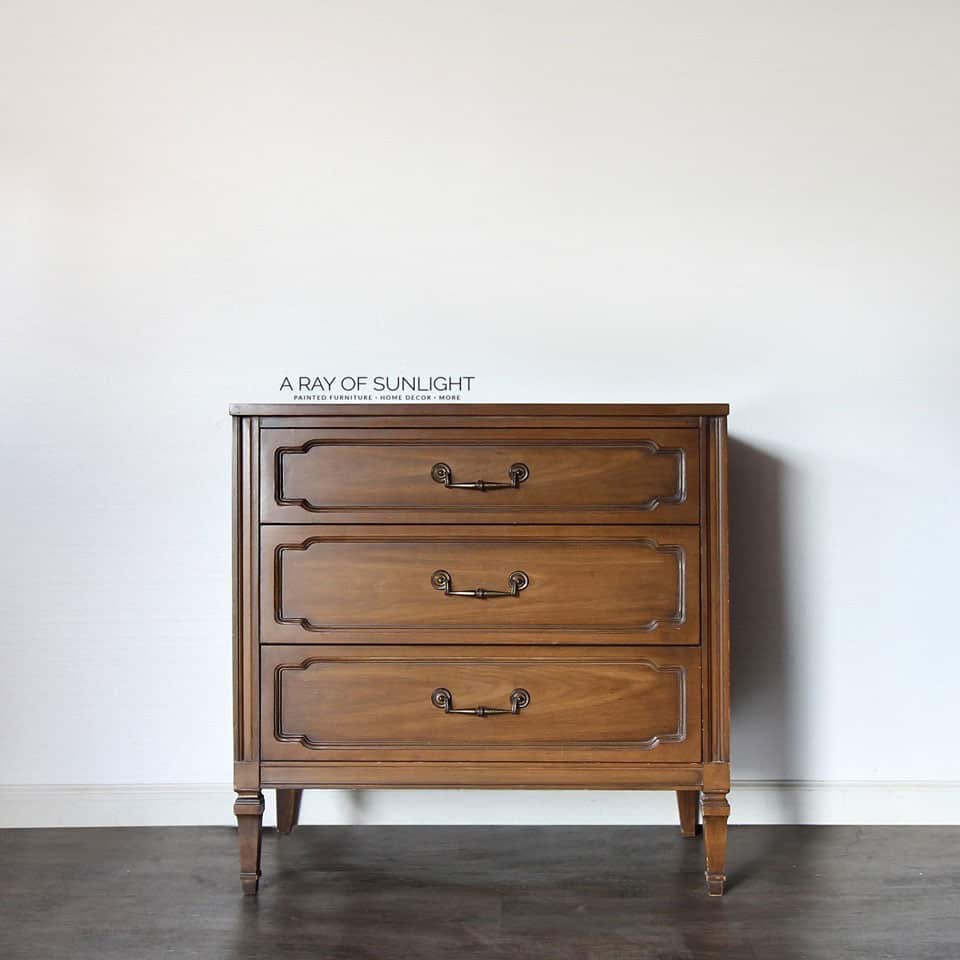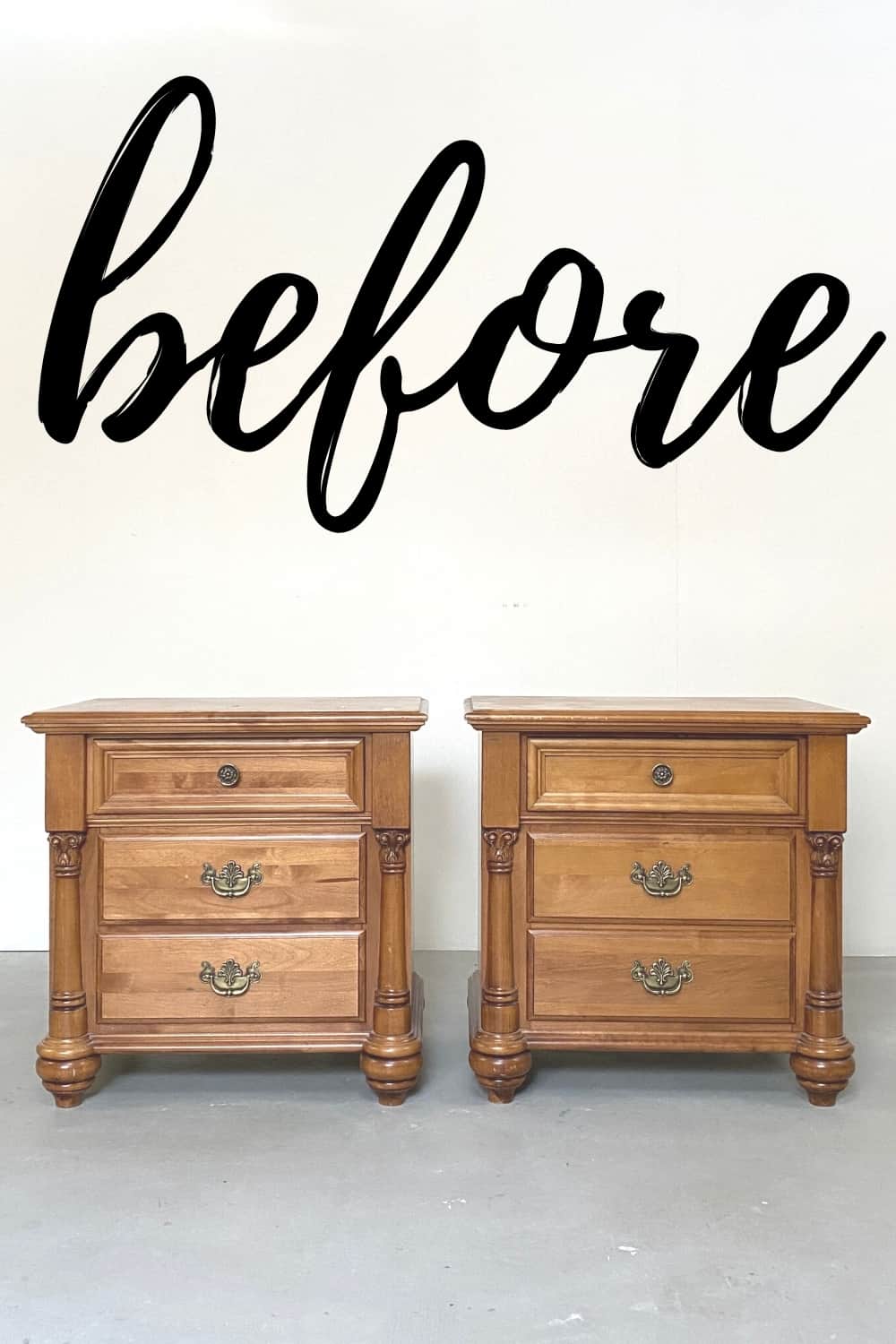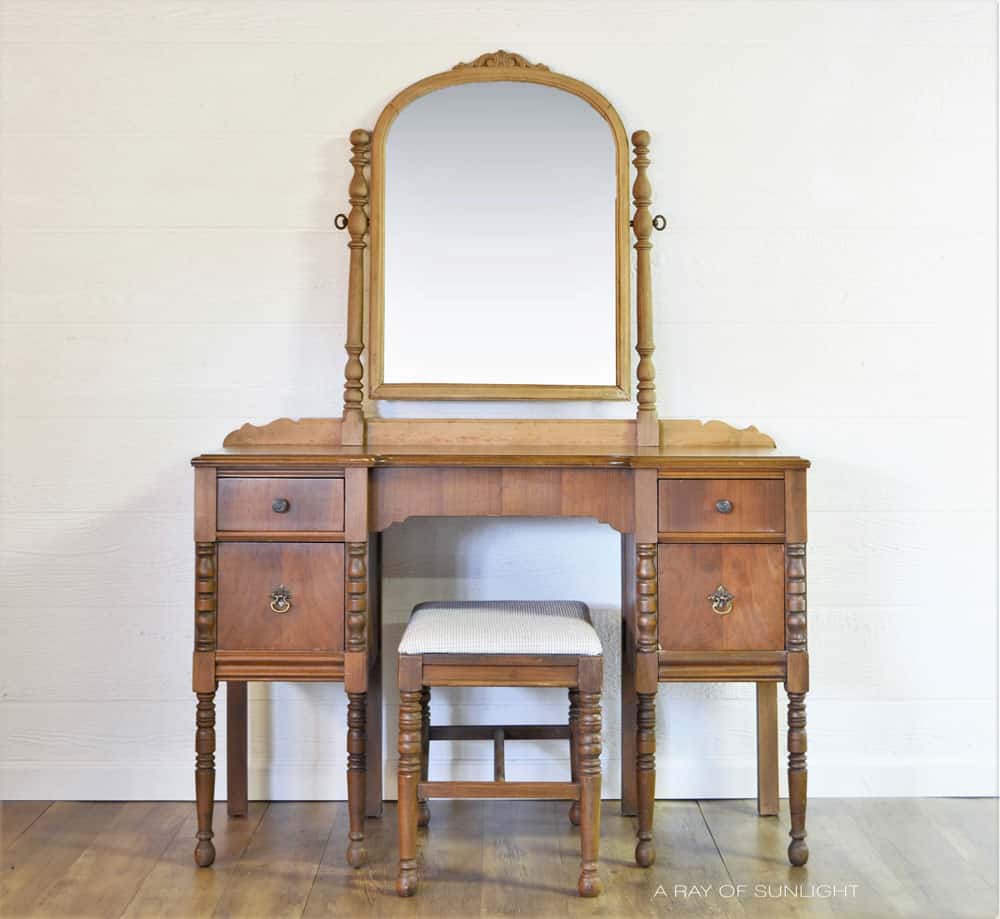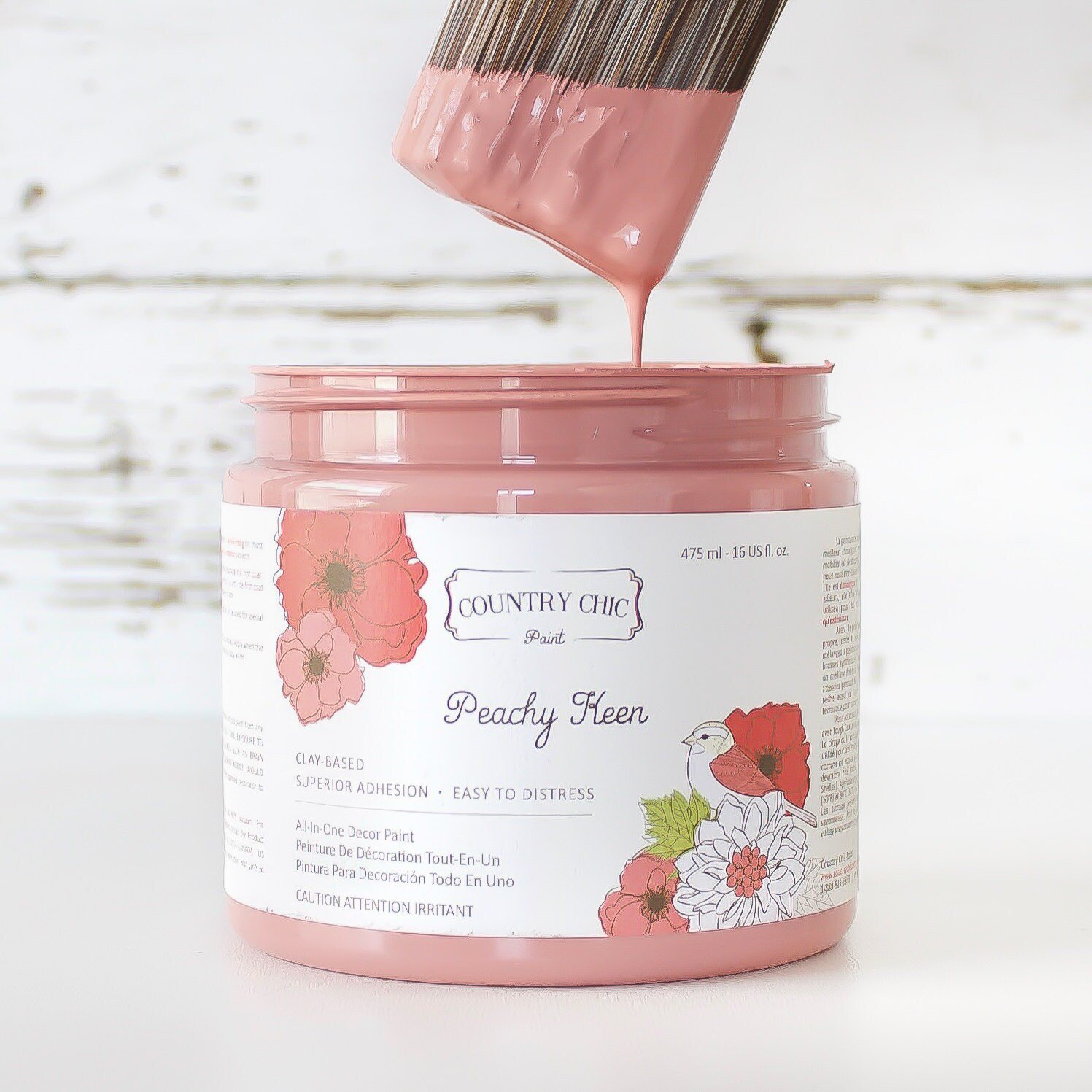Vintage Nightstands Makeover
Check out this vintage nightstands makeover with some paint and stain. It’s another great makeover to add to our list of painted nightstands ideas.
I’m so excited to share these light gray nightstands with you today! We updated them with one of my all time favorite colors, and it’s not white!

These wooden nightstands are so cute!! They had seen better days, but hey, that’s why we paint furniture right?
Supplies Used For Vintage Nightstands Makeover
As an Amazon Associate, I earn from qualifying purchases. I also may earn from other qualifying purchases with other companies or get free product to review and use. All opinions are my own.
- Sander
- Sandpaper (80, 220, 400)
- Bondo
- Wood Filler
- Pre-Taped Plastic
- Painters Tape
- Shellac
- Paint Sprayer
- Chalk Paint in Lazy Linen
- Walnut Gel Stain
- A Cut Up T-shirt for a stain rag
- Disposable Gloves
- Respirator
- Polyurethane
- Clear Knobs
Here are the 10 best painting furniture supplies you must have!
Preparing Nightstands for Paint
These cuties were definitely in need of a refresh and were pretty worn out!
I started out by cleaning them up and prepping them for paint. Learn exactly how to prepare furniture for painting here.
Sanding Nightstand Tops and Legs for Stain
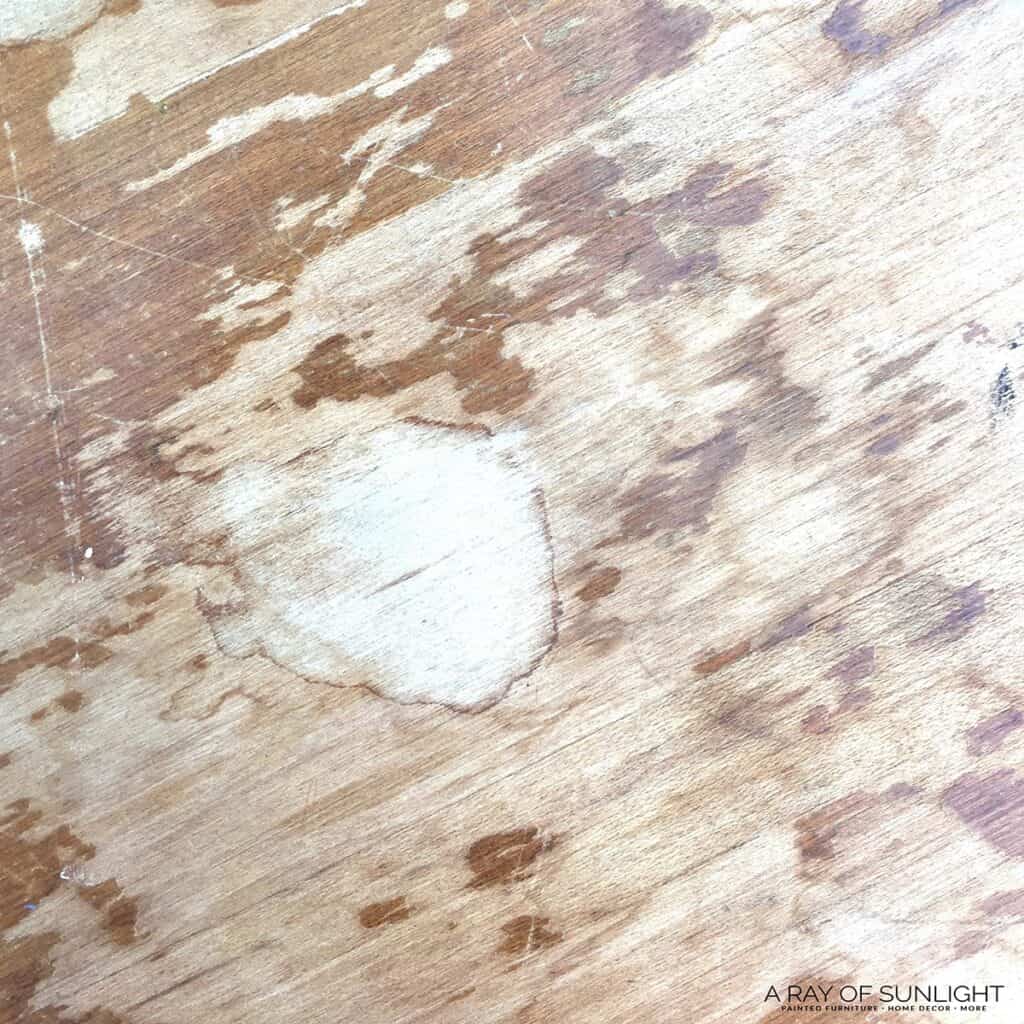
I sanded the tops of the nightstands down right away since the finish on the top of one of them was worn down (see picture).
It would have been so much easier to strip them with a chemical stripper instead of sanding them because of the details on the edges.
I typically strip them instead, but something about a worn off finish makes me want to sand. Here’s more about how to remove stain from wood.
If I would have had my SurfPrep sander back then, it would have been a lot easier to sand the curved edges.
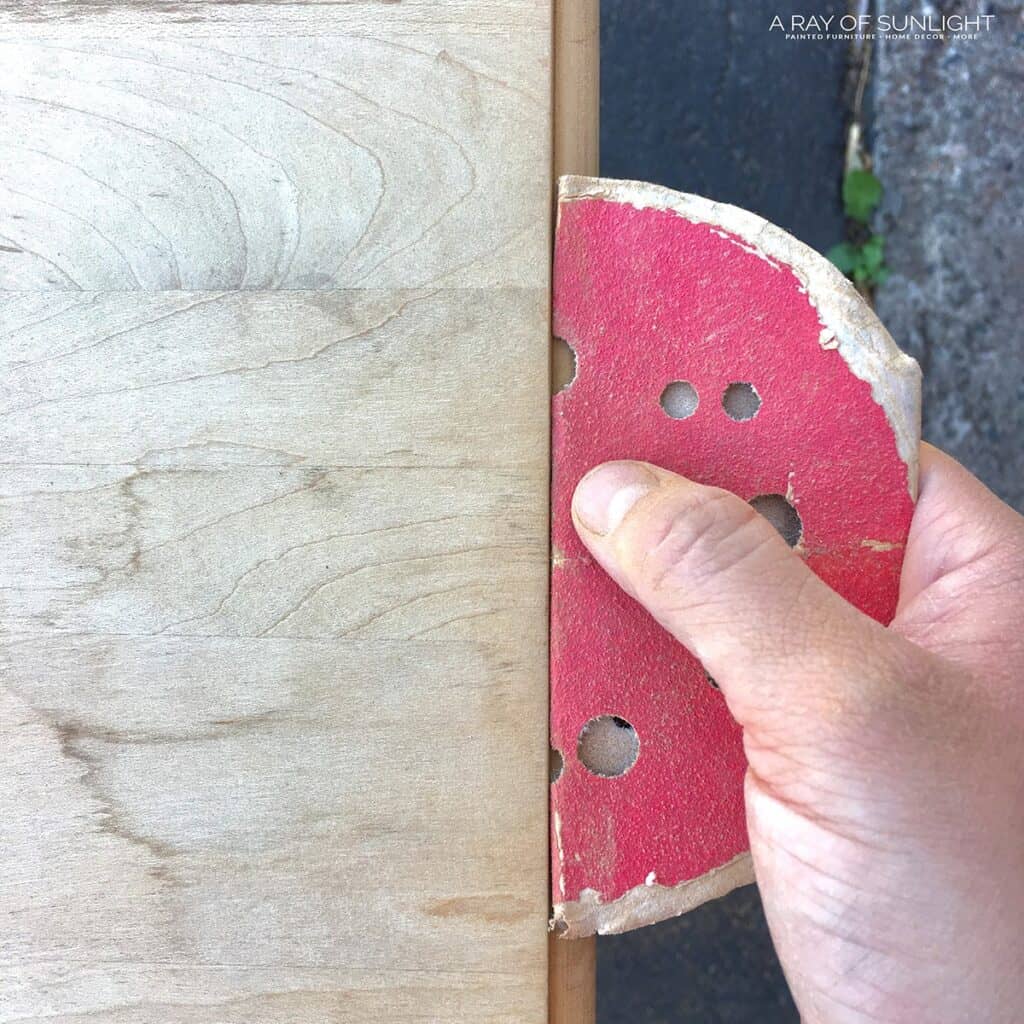
If you aren’t familiar with the different levels of sandpaper, the lower the number, the more coarse or rough the sandpaper is. So it will be easier to take off a finish with lower grit sandpaper.
But, the wood will be rough after that. So it’s always best to work your way up to a higher grit sandpaper to smooth everything out and make that wood shine.
Learn more about how to choose the right type of sandpaper for furniture here.
Protecting Tops and Legs from Overspray
Once the tops were completely sanded down, I taped them off with pre-taped plastic and painters tape. I also taped off the drawers with the plastic and tape.
Check out this post to find out what is the best painters tape that doesn’t bleed.
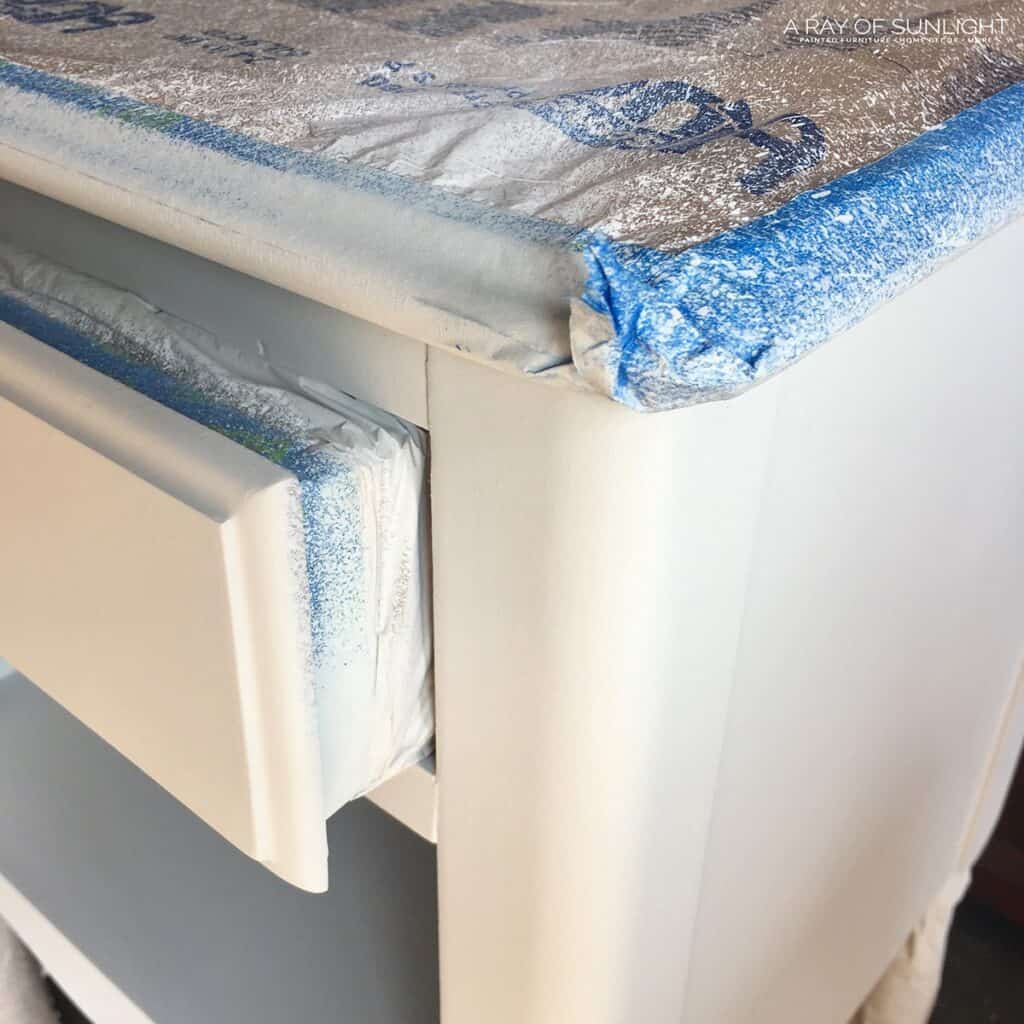
You can see more ways for how to prevent overspray when painting furniture here.
I lightly sanded the legs down, and then wrapped some brown paper around the legs with tape (the pre-taped plastic is also great for this!) to prevent over spray on them since I wanted to keep them stained.
Filling Holes for Changing Hardware
To update the hardware, I filled the holes in with Bondo. Bondo is a great alternative to wood filler since it dries super hard pretty quickly, and it doesn’t shrink and crack like wood filler does.
Check out my Bondo wood filler review to learn more about the pros and cons of this product.
The biggest downside is how bad it stinks! Learn more about the best wood fillers and see our comparison of wood fillers for filling holes when replacing cabinet or furniture hardware here.
Priming Before Painting Nightstands
Since it was nice and warm, I took the nightstands outside to paint. I simply laid down a few large cardboard boxes on the ground, and then got to work.
Before I went any further, I sprayed 3 coats of clear shellac onto the nightstands.
In the furniture painting world, there is this ugly thing called “bleed through” and you really never know when it’s going to strike. But shellac really helps with that issue.
So I shellac everything now. And I mean everything. But especially light colors that won’t hide the bleed through.
I let the clear shellac dry for at least a few hours, but overnight is best. Here’s more on how to stop stains from coming through paint!
Painting Nightstands with a Paint Sprayer
I love to paint my furniture with a paint sprayer. Mostly because I love the brush free finish, but also because I love how much faster it is!
There is a little bit of a learning curve to thinning out the paint, but to help you with that, I wrote these tutorials to help you with how to use a Wagner Double Duty paint sprayer and how to thin paint for a Wagner sprayer.
I used Country Chic Paint’s Lazy Linen for these nightstands. Check out my honest and detailed Country Chic Paint review here.
Lazy Linen is the very best light gray chalk paint I have come across yet! It’s a warm grey or greige, and I just love the modern touch it gives furniture.
So I thinned out the paint and painted about 3-4 coats of Lazy Linen on the nightstands.
I used 3-4 coats because of how light the paint is. Not because it doesn’t cover well, but because no light paint covers very well.
And when the paint in thinned out for the paint sprayer, another coat is usually necessary because the coats go on thinner than if you were to brush them.
But, when you use a paint sprayer, and since the chalk paint dries so quickly, it all goes very quickly. Check out my list of the top chalk paint brands for your future furniture makeovers.
Distressing Painted Nightstands
After the paint was dry, I lightly sanded everything down with 220 grit sandpaper. The sanding makes the paint feel smoother, and it also distresses at the same time.
Learn more about the 6 best distressing furniture techniques here. For this vintage nightstands makeover I wanted a more distressed and worn finish.
So I made sure to sand all the edges until wood started to show through. I also sanded a few areas on the flat surfaces to create a worn look.
Staining Nightstand Tops and Legs
Once the body was painted and ready to be sealed, I took off the plastic on the tops and the legs. I stained the tops with walnut gel stain.
Gel stain is a stain that is usually used over an existing finish, like how these legs weren’t sanded down to bare wood. Check out the best wood stains for refinishing furniture here.
And then I used an old cut up shirt to wipe the stain onto the legs. Gloves and a respirator are best for this process! Learn more about how to restain wood furniture here.
When I wiped the stain on, I wiped around the legs, all the way from the top to the bottom. When in doubt, look for the grain pattern, and follow it. I worked on two legs at a time.
See gel stain in action with this tutorial on how to stain wood darker.
Topcoating Paint and Stain on Nightstands
To finish up these nightstands, I sealed the paint and stain with multiple coats of my favorite polyurethane.
If I used a paint sprayer for only one thing, it would be to topcoat painted and stained furniture.
A brush just leaves behind too many imperfections and streaks, but a sprayer makes it easy to get a smooth even finish.
And poly is super important! Not only does it seal the chalk paint, but it also creates a strong, durable and smooth finish.
Here’s how to apply polycrylic to painted furniture. Learn ALL of my tips and tricks on how to spray polyurethane here!
A lot of people use wax to seal their chalk paint, but wax really isn’t as durable as poly, and it takes so much longer to wax on and wax off. haha!
But really. It takes forever compared to spraying the poly on. Learn more about topcoats for painting furniture here.
Changing Nightstand Hardware

To finish it off, I drilled new holes into the center of the drawers, and added some fresh new clear knobs to finish out the look. Learn all about the process of how to change hardware here.
And here’s what they look like now!!
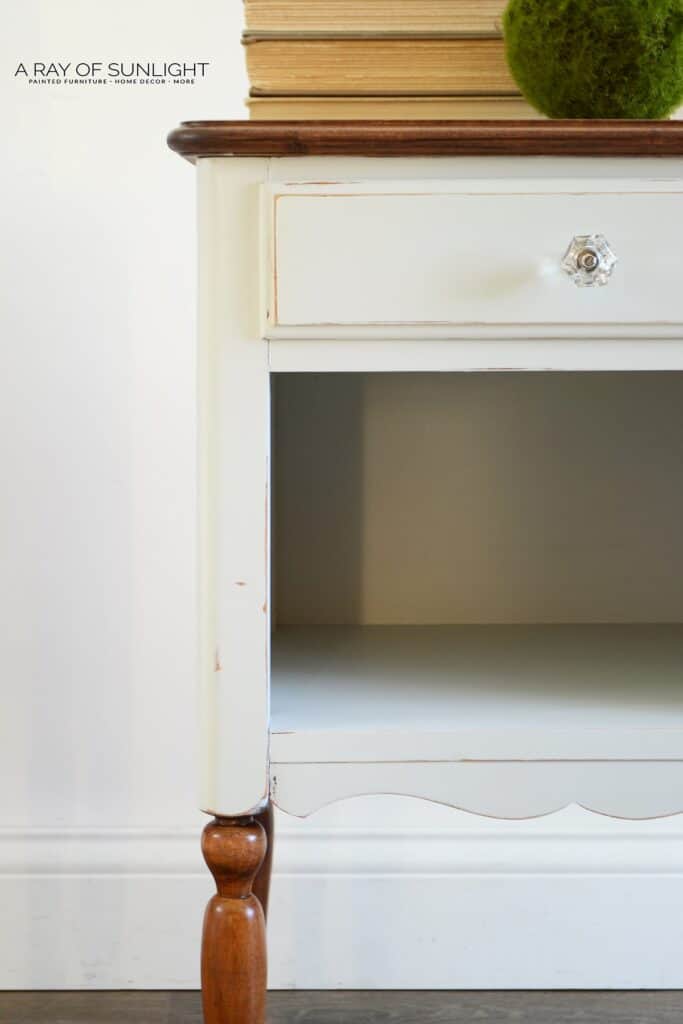
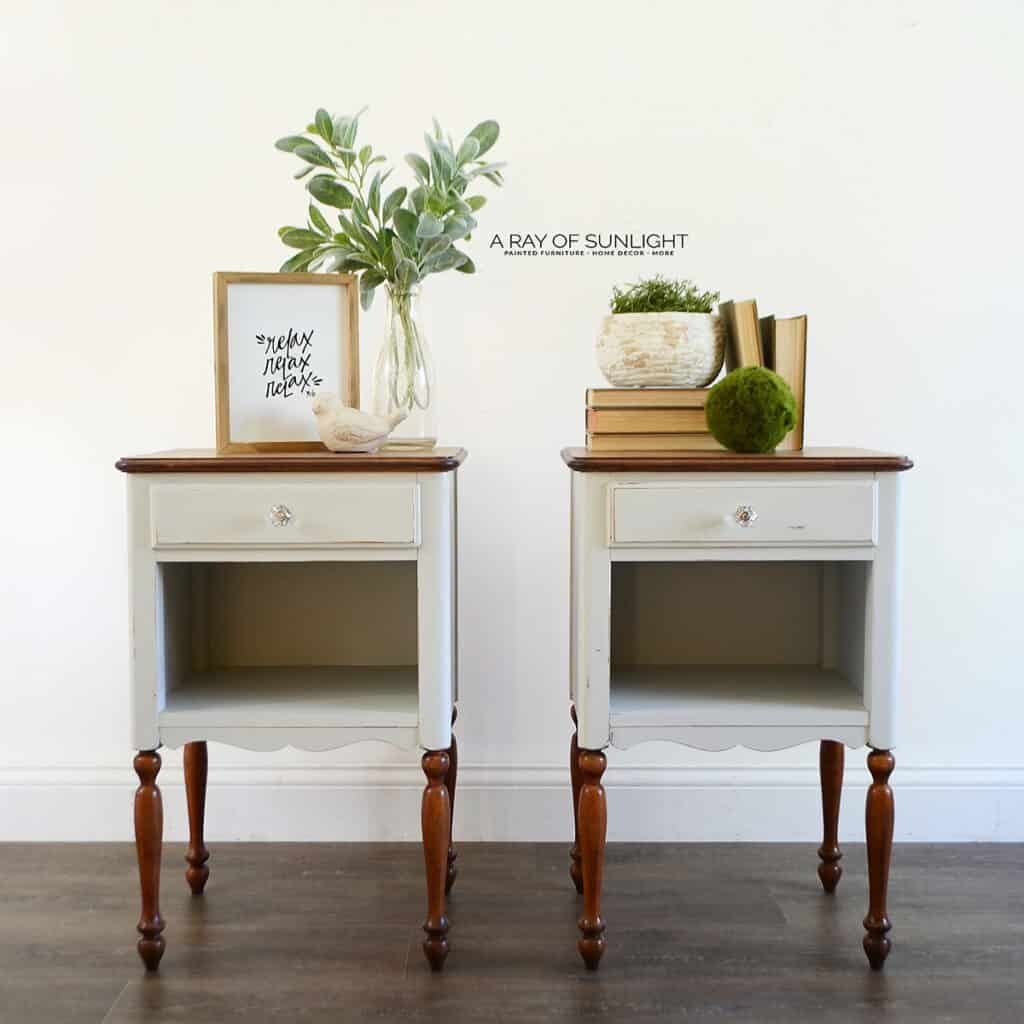
More Before And After Makeovers
Click any of these “before” photos below to view the “after” of that makeover.

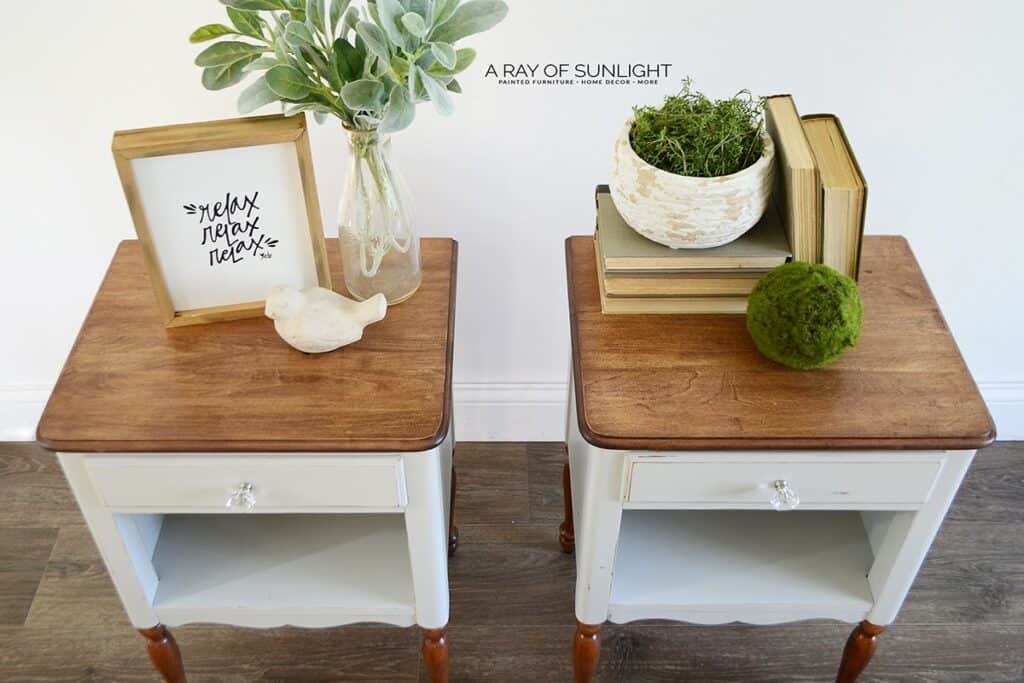
What a makeover! I know there were a lot of little pieces to this tutorial, and I hope that doesn’t overwhelm you!
Please let me know how I can help and if you try doing something similar! I would love to see!
But if you’re wondering is two-toned furniture in style, check out this post to find out.
More Painted Furniture Makeovers
- French Provincial Nightstands Makeover
- Grey Chalk Paint Dresser
- Blue Chalk Paint Coffee Table
- DIY Emerald Green Bedside Table
- Vanity Turned into Nightstands
Follow us on YouTube to get more tips for painting furniture.
Or share your project with us on our Facebook Group and be part of our community. See you there!




